Toyota Camry Vs Honda Accord: Which Sedan is Right For You?

The Toyota Camry vs Honda Accord. Eternal rivals in the mid-size sedan market. Choosing between them has been the debate of many a dinner table.
Where the Camry is known for its stately demeanour and a pliant ride, the Accord strikes the balance between a comfortable ride and spirited driving. But of late Toyota’s focus for the Camry has shifted and the Camry TRD is the prime example of that change. With a V6 engine, bigger brakes, a spoiler and stiffened suspension, it aims to pull at the enthusiast’s heartstrings.
The Accord has ditched its V6 engine altogether and has taken a more sedate approach to the mid-size sedan market. It is now a pliant and comfortable car, but in the right trim, can still reward enthusiasts. So, what is the better choice between the Toyota Camry vs Honda Accord? Read on to decide for yourself.
Powertrain
Camry: A choice of three powertrains is available with the Camry. Standard is a 2.5-liter four-cylinder engine that makes between 202-206 hp and 182-186 lb-ft or torque, depending on trim. The available 3.5-liter V6 produces 301 hp and 267 lb-ft of peak torque. Both engines come with an eight-speed automatic transmission. All-wheel drive is also available—it’s borrowed from the RAV4—but only with the 2.5-liter. Of course, there is also the hybrid option which uses a 2.5-liter four-cylinder paired to an electric motor for a total system output of 208 hp.
Accord: The Accord is available with three engine options as well but they are nowhere near as dramatic as its chief rival. You can choose between two turbocharged units: a 1.5-liter four-cylinder from the CR-V or the 2.0-liter four-pot. The 1.5-liter engine makes a not-so-dismal 192 hp and 192 lb-ft and is offered as standard on all trims except Touring. The 2.0-liter turbo is available as an option on Sport and EX-L trims but comes as standard on the top Touring trim. Output for the 2.0 stands at 252 hp and 273 lb-ft of torque. The hybrid version of the Accord uses a 2.0-liter four-cylinder engine and electric motor combination that’s good for 212 hp.
The Accord’s transmission lineup is a little more complicated. There are two options: the 1.5-liter comes with a continuously-variable transmission (CVT), while the 2.0-liter uses a 10-speed automatic. Unlike the Camry, no all-wheel drive is available.
Bottom Line: In terms of performance, the Camry seems to outshine the Accord. But take a closer look and the difference isn’t quite black and white. Sure the V6 of the Camry makes much more power but Accord’s 2.0-liter turbo makes more torque and is also lighter. That should result in quicker acceleration.
All-wheel drive is available with the 2.5-liter trims on the Camry while the Accord doesn’t offer AWD at all. All things considered, the Camry inches ahead in this criteria simply because if you want AWD, you have to get a Camry.
Toyota Camry vs Honda Accord: Fuel Economy
Camry: Most frugal of the lot is the Hybrid LE trim which returns 51 mpg in the city and 53 mpg on the highway. Other versions of the Hybrid settle for 44 mpg city and 47 mpg highway. The 2.5-liter equipped cars with front wheel drive are good for 28 mpg city and 39 mpg highway. The XLE and XSE drop efficiency a bit to 27 mpg city and 38 mpg highway. Add all-wheel drive and efficiency is further reduced to 25 mpg city and 34 mpg city.
Those wanting V6 power should expect a return of 22 mpg in the city while highway mpg can range from 31 to 33 depending on the trim.
SEE ALSO: 2020 Toyota Camry TRD ReviewAccord: The EPA rates the 1.5-liter at 30 mpg in the city and 38 mpg on the highway for the LX and EX-L trims. The Sport trim takes a bit of an efficiency hit, rated at 29 mpg city and 35 mpg highway. Trims with the 2.0-liter engine return the lowest fuel mileage which stands at 22 mpg in the city and 32 on the highway.
The regular hybrid model delivers 48 mpg in the city and 47 mpg on the highway. The Sport Hybrid drops these figures a bit, with 44 mpg city and 41 mpg highway.
Bottom Line: In the frugality wars, the Camry wins on the highway thanks to its higher capacity engines. The larger engines are more relaxed at higher speeds but the smaller turbo engines on the Accord are much more frugal in the city. So this comes down to where you drive more. If you’re a city slicker, it’s the Accord. But if you routinely find yourself on the interstate, the Camry would be a better choice. In the hybrid category, the Camry holds a distinct advantage.
Technology and Features
Camry: Camry’s trim lineup is an indecisive individual’s worst nightmare. At least Toyota offers its Safety Sense driver assistance system as standard. It includes pre-collision warning, pedestrian and cyclist detection, radar guided cruise control, and lane-keeping with steering assist.
The base LE trim includes a 7.0-inch touchscreen that comes with Apple CarPlay, Alexa, and Android Auto as standard. You also get a 4.2-inch MID screen, an eight-way power-adjustable driver’s perch, three USB slots, and 17-inch wheels. Plus, the electric moonroof, a convenience package including auto-dimming rearview mirror and Homelink system are also available. Further, there’s the optional blind-spot detection system, an audio system upgrade, and dual-zone climate control along with the AWD cold weather package which further adds heated front seats and side mirrors. The LE can also be had as a hybrid.
The XLE trim is probably one of the best value-for-money trims in the entire Camry lineup. It gets 18-inch wheels as standard, with AWD again optional. It includes all of the standard and optional equipment from the afore-mentioned trims, plus rear cross-traffic alert, wireless charging, and a larger, 8.1-inch touchscreen unit. Both seats are eight-way adjustable. Options include a panoramic moonroof and the Navigation Plus package, which adds dynamic nav and a JBL sound system. The Driver Assistance package includes a color head-up display, bird’s-eye camera, rear cross-traffic braking and vented front seats. Like the LE, the XLE can also be had as a hybrid.
The XLE V6, along with the 3.5-liter V6, adds the panoramic moonroof, JBL system and HUD as standard, but the Driver Assist Package remains optional.
If you want a slightly sportier LE trim, get the SE. It adds blacked-out exterior elements along with a sporty set of seats and a three-spoke steering wheel over the LE. It also comes with climate control as standard. Option packages are identical to the LE. Like the SE, the XSE is the sportier-looking version of the XLE. It gets the blacked-out treatment like the SE and comes with 19-inch wheels compared to 18-inch wheels of the XLE. Both the SE and XSE are available as Hybrids.
Then there is the TRD edition. Essentially the V6 version of the SE trim in terms of convenience equipment, it does get the visual TRD treatment, including a liberal dose of racy-red aesthetics. It also gets reworked suspension and bigger brakes but comes with FWD only.
Accord: Honda offers the Accord in seven core trims and three exterior packages that enhance the aesthetics of the Accord. The LX trim comes with dual-zone climate control as standard along with push-button start, and a 7.0-inch touchscreen infotainment system, Apple CarPlay and Android Auto. Furthermore, Honda Sensing safety is standard across the range which includes adaptive cruise control, collision mitigation, and lane-keeping assist. Next is the Hybrid trim which is similar to the LE but features a bit more content.
The Sport trim is a slightly more complex trim. It comes with the 1.5-liter engine, but does include either the 2.0-liter engine or the hybrid powertain as an option. Opting for the upgraded drivetrains fetches you the moonroof, blind-spot detection with cross-traffic, heated front seats, Sirius XM radio, heated side mirrors and 19-inch wheels. Otherwise, the standard kit includes an 8.0-inch display with Apple CarPlay and Android Auto and a 12-way electrically adjustable driver’s seat.
SEE ALSO: 2021 Honda Accord Hybrid Review: The Great All-RounderFeatures like memory function and auto-dimming rearview mirror are available in the EX-L and Touring trims only. The EX-L gets a premium audio system and the 1.5-liter engine. The 2.0-liter powertrain is standard on the Touring trim. Features like wireless charging, HUD, in-car WiFi, NFC and Honda’s satellite-linked navigation system are exclusive to the Touring trim and not even available as an option otherwise.
Bottom Line: The Camry’s trim catalog might require a linguist to decipher but the fact remains that the package combination available on the Camry are endless. Accord’s feature list might be simple but it doesn’t offer features like wireless charging and HUD on the lower trims. There’s a better chance a Camry trim will meet your needs, but the Accord does cover a few popular segments within the class.
Interior and Cargo Space
Camry: Inside, the Camry offers ample room for adults of all sizes. There’s 38.3 and 37.6 inches of headroom at the front and rear. In trims with the moonroof, the front headroom reduces to 37.5 inches but the rear headroom remains unaltered. It also offers 57.7 inches of shoulder width in the front and 55.7 inches at the rear. Front passengers can expect 42.1 inches of legroom in the front while rear occupants get 38.0 inches worth of knee room. In the trunk you get 15.2 cu-ft worth of cargo volume.
Accord: At 192.2 inches long, the Accord is half an inch shorter than the Toyota and yet offers a wheelbase that is 0.2 inches longer. It is also an inch wider and slightly taller as well. So it does offer more cabin space compared to its chief rival. The headroom at 39.5 inches is an inch more than the Camry. With the moonroof however, it drops down to 37.5 inches which is identical to that of the Camry. The critical difference though is in the legroom. In the Accord you get 42.3 inches of legroom in the front and 40.4 inches at the rear which is two inches more than the Toyota. The cargo space too at 16.7 cu-ft is 1.5 cubes more than its rival.
Bottom Line: The Honda stays true to its man maximum, machine minimum philosophy and offers more cabin and trunk space compared to the Camry despite being slightly shorter in length. Yes, the difference is minimal but a lot of times, an inch here and half-inch there makes a significant difference in the in-cabin experience.
Toyota Camry vs Honda Accord: Styling
Camry: Even though the overall design of the Camry is uniform, the two distinct fasciae of the LE and SE trims set them apart. Yes, the overall design itself is quite edgy and an attempt at youthfulness with the contoured bonnet and prominent shoulder lines. You cannot mistake the Camry for anything else on the road and though styling is subjective, I do find the “sporty” styling rather appealing especially since it also has the performance to boot. Having said that, the design does seem a bit forced as it is a stark departure from the simple and rather laid-back design language of the previous generation of Camry sedans. And that muddles the appeal a fair bit as the Camry appears to be trying too hard.
Accord: The Accord on the other hand looks quite elegant as it features a simple yet timeless design. Yes, the front is quite busy and the nose a tad too prominent. But the smooth lines and the coupe-esque roofline that blends seamlessly into the sportback-like rear quarter of the car balances the design out. The Accord will likely age well and not look dated for quite a few years to come.
Bottom Line: Looks are subjective but the Accord hits the spot more for us.
Pricing
Camry: The Toyota Camry LE starts at $27,040 (destination charge included in all pricing). The SE starts at $28,580 while the XLE and XSE come in at $31,790 and $32,340 respectively. All trims with the 2.5-liter powertrain can be had with AWD for $1,400 extra.
For V6 models, pricing starts at $34,105 for the TRD, and goes up to $36,915 for the XLE and $37,465 for the XSE. The SE Hybrid commands a price of $30,710, with the XLE hybrid clocking in at $34,065, and the XSE hybrid pegged at $34,615.
Accord: The Accord starts at $27,615 for thee LX trim after destination charges. The Hybrid is next line, set at a price of $28,815. The Sport trim starts from $30,075, while opting for the 2.0-liter power unit costs $4,530 extra. Further up the trim ladder, the EX trim starts at $28,875, the Hybrid Sport comes in at $32,165 while the EX-L commands a price of $33,935. The Top trim Touring model is a bit more steep, costing $39,545.
Bottom Line: The Toyota offers more trim levels, but the Accord starts for less. Its top price is also all-inclusive; the Camry XSE V6 still has option packages available. We’re calling it in the Accord’s favor.
Toyota Camry vs Honda Accord: Verdict
As expected, the battle of Toyota Camry vs Honda Accord produces no clear-cut winner. The Toyota Camry offers a dedicated performance model and has an exhaustive list of features. It has a V6 engine for more traditional buyers as well.
The Accord still offers a lot of choice, but lacks the option of all-wheel drive. The Honda is the more frugal of the two, unless you want a hybrid, in which case the pendulum swings back in the Camry’s favor. But interior space and a lower price point are both pluses for Honda’s mid-size sedan.
Honestly, one cannot go wrong with either of these vehicles, which makes sense as they’ve been class leaders for decades.
Become an AutoGuide insider. Get the latest from the automotive world first by subscribing to our newsletter here.

More by Kshitij Sharma





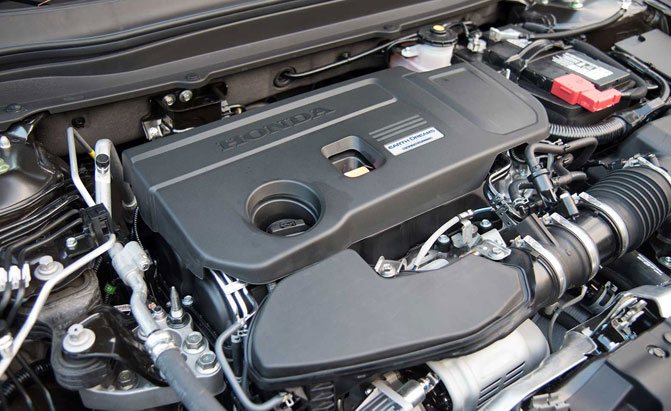










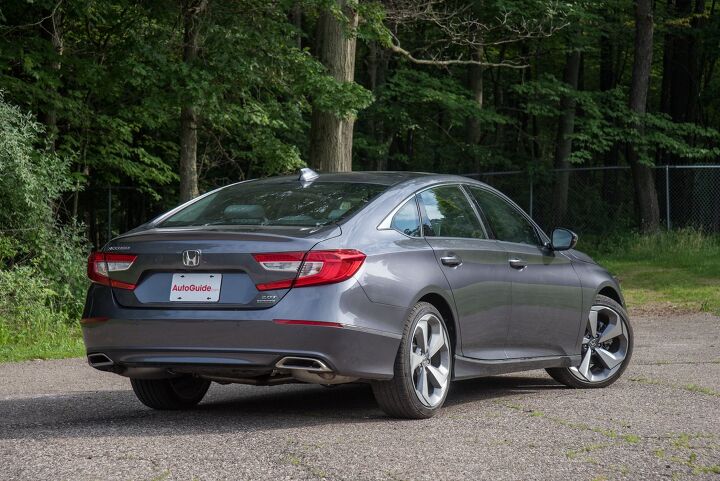














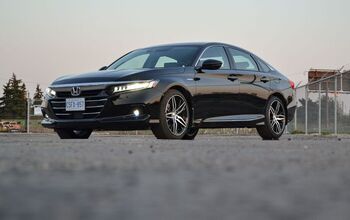
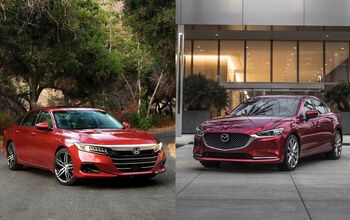





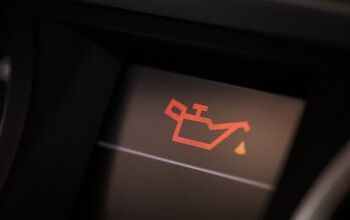






Comments
Join the conversation
Toyota Camry LE starts at $27,040. The Accord starts at $27,615. Typo, "..but the Accord starts for less"? Only reason I'd take the Camry Hybrid AWD: Snow-belt Otherwise, I'd flip a coin....or see which one I could order and receive sooner.
The accord is a better car by far, no matter what some dumb Camry owner says. Someones jealous they dont have the luxury of a very smooth car. Poor Toyota owners.